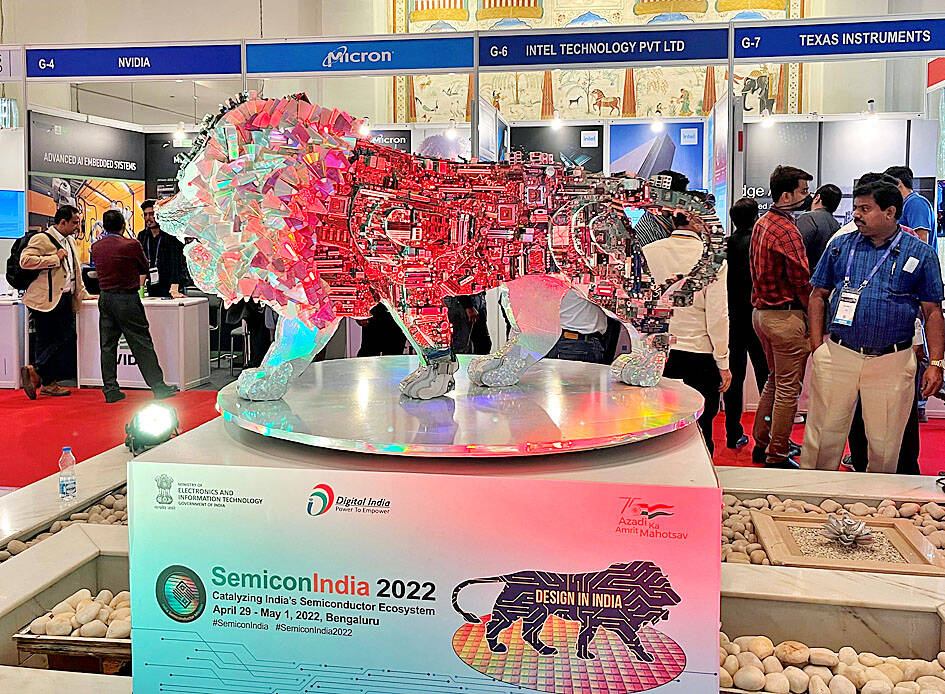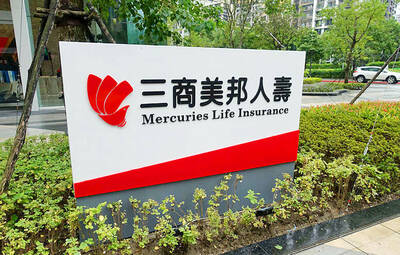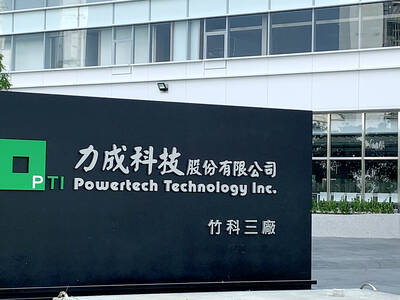Big companies including a Foxconn Technology Group (富士康科技集團) joint venture (JV) that bid for India’s US$10 billion semiconductor incentives are struggling due to the lack of a technology partner, a major setback for Indian Prime Minister Narendra Modi’s chipmaking ambitions.
A planned US$3 billion semiconductor facility in India by India Semiconductor Manufacturing Co (ISMC) that counted Israeli chipmaker Tower Semiconductor Ltd as a tech partner has been stalled due to the company’s ongoing takeover by Intel Corp, three people with direct knowledge of the strategy said.
A second mega US$19.5 billion plan to build chips locally by a joint venture between India’s Vedanta Ltd and Foxconn, known as Hon Hai Precision Industry Co (鴻海精密) in Taiwan, is also proceeding slowly as their talks to rope in European chipmaker STMicroelectronics NV (STM) as a partner are deadlocked, a fourth source with direct knowledge said.

Photo: Reuters
Modi has made chipmaking a top priority for India’s economic strategy as he wants to “usher in a new era in electronics manufacturing” by luring global companies.
India, which expects its semiconductor market to be worth US$63 billion by 2026, last year received three applications to set up plants under the incentive scheme. They were from the Vedanta-Foxconn JV; a global consortium ISMC which counts Tower Semiconductor as a tech partner; and from Singapore-based IGSS Ventures Pte Ltd.
The Vedanta JV plant is to come up in Modi’s home state of Gujarat, while ISMC and IGSS each committed US$3 billion for plants in two separate southern states.
The three sources said ISMC’s US$3 billion chipmaking facility plans are on hold as Tower could not proceed to sign binding agreements because things remain under review after Intel acquired it for US$5.4 billion last year. The deal is pending regulatory approvals.
Talking about India’s semiconductor ambitions, Indian Minister of State for Skill Development and Entrepreneurship Rajeev Chandrasekhar said in a May 19 interview with Reuters that ISMC “could not proceed” due to Intel acquiring Tower, and IGSS “wanted to resubmit” the application for incentives.
The “two of them had to drop out,” he said, without elaborating.
Tower is likely to re-evaluate taking part in the venture based on how its deal talks with Intel pan out, two of the sources said.
ISMC consortium partners Next Orbit Ventures did not respond to a request for comment. Tower and Intel declined to comment.
Singapore-based IGSS and India’s Ministry of Electronics and Information Technology did not respond to requests for comment.
Most of the world’s chip output is limited to a few countries like Taiwan, and India is a late entrant. Amid much fanfare, in September last year, the Vedanta-Foxconn JV announced its chipmaking plans in Gujarat. Modi called the US$19.5 billion plan “an important step” in boosting India’s chipmaking ambitions.
However, things have not gone smoothly as the joint venture tries to hunt for a tech partner. The fourth source said Vedanta-Foxconn had got on board STMicroelectronics for licensing technology, but the Indian government had conveyed it wants STMicro to have “more skin in the game” — like a stake in the partnership.
STMicro is not keen on that and the talks remain in limbo, the source added.
“From STM’s perspective, that proposal doesn’t make sense because they want India market to first be more mature,” the person said.
Chandrasekhar told Reuters during the interview the Vedanta-Foxconn JV was “struggling currently to tie up with a technology partner.”
STMicro declined to comment.
In a statement, Vedanta-Foxconn JV chief executive David Reed said they have an agreement with a technology partner to transfer technology with licenses, but declined to comment further.
In a move seen to revive investor interest, India’s IT ministry on Wednesday said the country would start reinviting applications for chipmaking incentives. This time the companies can apply until December next year, as opposed to the initial phase where there was only a 45-day window.
“It is expected that some of current applicants will reapply and new fresh investors will also apply,” Chandrasekhar said on Twitter.

Mercuries Life Insurance Co (三商美邦人壽) shares surged to a seven-month high this week after local media reported that E.Sun Financial Holding Co (玉山金控) had outbid CTBC Financial Holding Co (中信金控) in the financially strained insurer’s ongoing sale process. Shares of the mid-sized life insurer climbed 5.8 percent this week to NT$6.72, extending a nearly 18 percent rally over the past month, as investors bet on the likelihood of an impending takeover. The final round of bidding closed on Thursday, marking a critical step in the 32-year-old insurer’s search for a buyer after years of struggling to meet capital adequacy requirements. Local media reports

US sports leagues rushed to get in on the multi-billion US dollar bonanza of legalized betting, but the arrest of an National Basketball Association (NBA) coach and player in two sprawling US federal investigations show the potential cost of partnering with the gambling industry. Portland Trail Blazers coach Chauncey Billups, a former Detroit Pistons star and an NBA Hall of Famer, was arrested for his alleged role in rigged illegal poker games that prosecutors say were tied to Mafia crime families. Miami Heat guard Terry Rozier was charged with manipulating his play for the benefit of bettors and former NBA player and

The DBS Foundation yesterday announced the launch of two flagship programs, “Silver Motion” and “Happier Caregiver, Healthier Seniors,” in partnership with CCILU Ltd, Hondao Senior Citizens’ Welfare Foundation and the Garden of Hope Foundation to help Taiwan face the challenges of a rapidly aging population. The foundation said it would invest S$4.91 million (US$3.8 million) over three years to foster inclusion and resilience in an aging society. “Aging may bring challenges, but it also brings opportunities. With many Asian markets rapidly becoming super-aged, the DBS Foundation is working with a regional ecosystem of like-minded partners across the private, public and people sectors

BREAKTHROUGH TECH: Powertech expects its fan-out PLP system to become mainstream, saying it can offer three-times greater production throughput Chip packaging service provider Powertech Technology Inc (力成科技) plans to more than double its capital expenditures next year to more than NT$40 billion (US$1.31 billion) as demand for its new panel-level packaging (PLP) technology, primarily used in chips for artificial intelligence (AI) applications, has greatly exceeded what it can supply. A significant portion of the budget, about US$1 billion, would be earmarked for fan-out PLP technology, Powertech told investors yesterday. Its heavy investment in fan-out PLP technology over the past 10 years is expected to bear fruit in 2027 after the technology enters volume production, it said, adding that the tech would